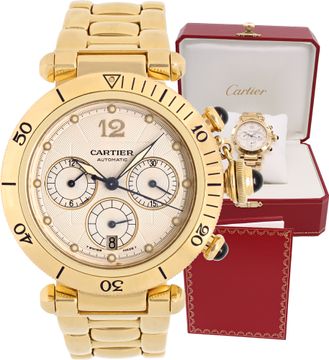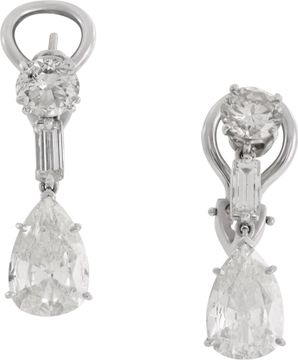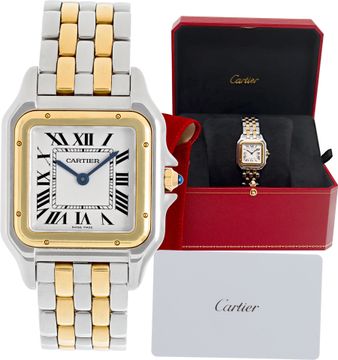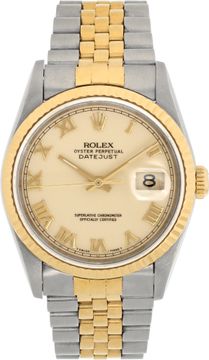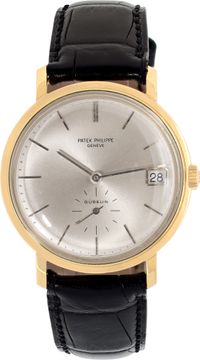The Art of Watchmaking: Understanding the Craft and Precision Behind Luxury Watches
The Art of Watchmaking: Understanding the Craft and Precision Behind Luxury Watches

Audemars Piguet Royal Oak Perpetual Calendar
In an era dominated by smartphones and digital gadgets, it’s easy to overlook the intricacies of traditional watchmaking. Yet, the luxury watch industry continues to thrive, with enthusiasts and collectors alike fascinated by the timeless beauty and precision of mechanical timepieces. These watches are not merely instruments for telling time; they are works of art, engineering marvels, and heirlooms passed down through generations.
At Gray and Sons Jewelers, we believe that understanding the craft behind luxury watches enhances one's appreciation for these exquisite pieces. Whether you’re a seasoned collector or just beginning your journey into the world of horology, this guide will take you through the rich history, complex mechanics, and artisanal craftsmanship that define the art of watchmaking.
The History of Watchmaking: A Tradition of Excellence

Vacheron Constantin Malte Tonneau Tourbillon
The history of watchmaking can be traced back to the 16th century when portable clocks evolved into pocket watches. These early timepieces, often carried by European royalty and nobility, were handmade by master craftsmen who dedicated their lives to perfecting the art of horology. Over the centuries, watchmakers continued to refine their craft, developing new techniques, mechanisms, and designs that pushed the boundaries of what a mechanical watch could achieve.
By the 19th and 20th centuries, wristwatches became popular, fueled by advancements in engineering and an increasing demand for portable, precise timekeeping devices. Brands like Patek Philippe, Vacheron Constantin, Audemars Piguet, and Rolex emerged as pioneers in luxury watchmaking, each offering a unique combination of technical innovation and artistic craftsmanship.
The Anatomy of a Luxury Watch
A luxury watch is much more than a collection of gears, springs, and hands. Every element is meticulously crafted to ensure not only precise timekeeping but also aesthetic harmony and durability. Let’s take a closer look at some of the key components that make up a luxury mechanical watch:
1. The Movement
The movement, also known as the caliber, is the heart of a watch. It’s the mechanism that drives the hands, date, and other complications, ensuring the timepiece’s functionality. Movements can be mechanical (either manual or automatic) or quartz. Luxury watches typically feature mechanical movements, which are celebrated for their intricate design and craftsmanship.
A mechanical movement consists of hundreds of tiny components working in harmony, including the mainspring (which stores energy), the escapement (which regulates the release of energy), and the balance wheel (which oscillates to keep time). These components are often hand-assembled and finished by master watchmakers, making each movement a work of art in its own right.
2. The Case
The case of a luxury watch not only houses and protects the movement but also serves as a canvas for the watchmaker’s artistic expression. Cases can be made from various materials, including stainless steel, precious metals like gold and platinum, and even innovative materials such as ceramic and carbon fiber.
Watch cases are often polished, brushed, or engraved to create a unique aesthetic. Some high-end watches also feature transparent case backs, allowing wearers to admire the intricate workings of the movement.
3. The Dial
The dial is the face of the watch, where the time is displayed. It can be simple and minimalistic or ornate and detailed, depending on the brand’s design philosophy. Luxury watch dials often feature hand-applied indices, guilloché patterns, or enamel work. Watchmakers pay great attention to the readability, symmetry, and overall balance of the dial design.
4. The Hands
The hands of a luxury watch may seem like small components, but they play a crucial role in the watch’s functionality and aesthetics. Depending on the brand, the hands can be sword-shaped, leaf-shaped, or dauphine-style, each adding a unique flair to the timepiece.
Watchmakers craft these tiny parts from precious metals or blued steel, carefully polishing and finishing them to match the overall design. The precision with which the hands are aligned and set is a testament to the skill of the watchmaker.
5. The Bracelet or Strap
The bracelet or strap is where comfort meets style. Whether it’s a leather band, metal bracelet, or rubber strap, luxury watches often feature finely crafted options that complement the case and dial design. Many brands allow for customization, letting wearers choose from a variety of materials and finishes to suit their personal style.
The Role of Complications in Watchmaking

Breguet Minute Repeater Perpetual Calendar
In watchmaking, a "complication" refers to any feature beyond the basic display of hours, minutes, and seconds. Complications can range from simple date functions to highly complex mechanisms such as perpetual calendars, tourbillons, and minute repeaters.
- Perpetual Calendar: This complication accounts for the different lengths of months and leap years, allowing the watch to display the correct date without manual adjustment.
- Tourbillon: Invented in the late 18th century, the tourbillon is a rotating cage that houses the escapement and balance wheel. It was originally designed to counteract the effects of gravity on a pocket watch’s accuracy. Today, the tourbillon is considered one of the most challenging complications to create and is often seen as a showcase of a watchmaker's skill.
- Minute Repeater: This rare and intricate complication chimes the time on demand, with distinct sounds for the hours, quarters, and minutes. Crafting a minute repeater requires exceptional skill, and it remains one of the most coveted features in high-end watches.
The Art of Handcrafting: What Makes a Luxury Watch Unique

What sets luxury watches apart from their mass-produced counterparts is the level of handcrafting involved in their creation. From the assembly of the movement to the finishing of the case, every detail is carefully executed by skilled artisans.
For instance, traditional watchmakers employ techniques such as hand-engraving, enameling, and gem-setting to create dials and cases that are truly one-of-a-kind. The process can take weeks, months, or even years, depending on the complexity of the design and the number of complications.
One notable aspect of handcrafting is the art of finishing. Luxury watch movements often feature decorative finishes such as Geneva stripes, perlage, and anglage, which not only enhance the aesthetic appeal but also demonstrate the watchmaker’s expertise. These finishes are applied by hand, often under a microscope, and require immense patience and precision.
Iconic Luxury Watch Brands: Masters of the Craft
Several iconic brands have established themselves as leaders in the world of luxury watchmaking, each with its own unique approach to the craft. Here are a few examples:
 Jaeger LeCoultre Reverso Duetto Duo
Jaeger LeCoultre Reverso Duetto Duo
- Patek Philippe: Known for its intricate complications and timeless designs, Patek Philippe is synonymous with prestige and craftsmanship. The brand is renowned for its attention to detail, with each watch assembled by a single watchmaker.
- Rolex: A household name, Rolex has set the standard for durability, precision, and innovation. The brand’s Oyster case revolutionized water-resistant watches, and its models, such as the Submariner and Daytona, are considered modern icons.
- Audemars Piguet: Audemars Piguet is celebrated for its avant-garde designs and technical mastery. The Royal Oak, introduced in 1972, was one of the first luxury sports watches and remains a symbol of the brand’s innovative spirit.
- Jaeger-LeCoultre: Known as the “watchmaker’s watchmaker,” Jaeger-LeCoultre has created movements for many of the top luxury brands. The brand is revered for its technical prowess and elegant designs, such as the iconic Reverso.
The Legacy of Watch Collecting: An Investment in Craftsmanship
Owning a luxury watch is about more than just owning a beautiful timepiece. It’s about preserving a piece of history, celebrating human ingenuity, and participating in a tradition that has spanned centuries. Many collectors view luxury watches as an investment—not only in terms of monetary value but also in craftsmanship and artistry.
Luxury watches often appreciate in value over time, especially limited-edition models or pieces from prestigious brands. However, their true value lies in the craftsmanship, heritage, and passion that go into their creation.
Sell Us Your Jewelry: Your Partner in Buying and Selling Luxury Watches
At Gray and Sons Jewelers, we recognize that luxury watches can hold both financial and sentimental value. Whether you’re looking to add a new piece to your collection or part with a timepiece that no longer fits your style, our sister company, Sell Us Your Jewelry, is here to assist. We specialize in buying and selling pre-owned luxury watches, offering you a trusted platform to sell your timepieces with confidence.
Our team of experts is dedicated to providing a seamless, transparent process for evaluating and purchasing luxury watches. With decades of experience in the industry, we ensure that you receive competitive offers and exceptional service.
The Art of Pairing Luxury Watches with Jewelry for a Cohesive Look
NEXT ARTICLE
Van Cleef & Arpels: The Poetic Complication in High Jewelry Watches - September 27, 2024


